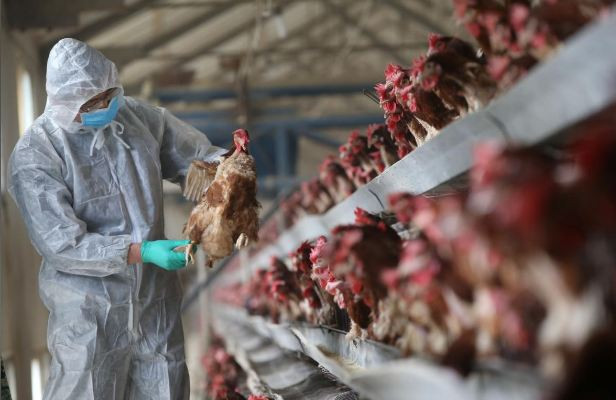The deadly strain of H5N1 bird flu or avian flu that began killing thousands of chickens in neighboring Hunan province at the end of January is worrying owners of chicken farms in Hubei province no end.
Of more immediate concern to these entrepreneurs, however, is the dwindling supply of chicken feed (especially soybean meal) reaching them due to roadblocks that prevent supply trucks from entering and leaving Hubei without authorization from the provincial government. Some chicken farmers told state-owned media there might only be three days worth of chicken feed in Hubei. Millions of chickens will die in the coming days if much-needed feed doesn't get to them in time.
Hubei is the epicenter of the raging human Novel coronavirus (2019-nCoV) outbreak, which as of Sunday evening had killed 813 people (including two outside China) and infected 37,580 others. It reported 81 new deaths from the disease and 2,147 newly confirmed cases in the past 24 hours.
Hubei chicken farmers wrote a letter to the China Animal Agriculture Association (CAAA) saying they're in a "very distressed" situation because of the roadblocks and the massive supply chain dislocations they're causing. They said transportation to and from Hubei is paralyzed. Most large-scale chicken farms in the province will face severe shortages of chicken feed soon, which will harm their operations.
There are some 348 million chickens in Hubei, which is China's sixth largest poultry producing province. Hubei slaughters more than 500 million chickens annually and is also a key egg producer.
In response to the letter, CAAA asked feed producers to immediately send 18,000 tons of corn and 12,000 tons of soybean meal to Hubei. State-controlled media confirms poultry farmers in Hubei are "in dire need" of chicken feed. It said existing stocks might only last from three to five days.
It said anxious chicken farmers are afraid millions of chickens will soon die without new supplies. Some farmers are reducing daily feeds to make supplies last longer.
The supply of soybean meal was already in short supply before the Wuhan coronavirus outbreak began and the extension of business shutdowns will worsen the shortage, said financial services company INTL FCStone.
"This is going to create massive problems in the livestock sector. Even if a local plant has resumed operations, it will still be longer than normal for delivery due to logistics problems (lack of labor, road closures, road checks)," said Darin Friedrichs, senior Asia commodity analyst at INTL FCStone.
Other analysts say the transport issue is harming chicken production in many regions. They expect not only first quarter 2020 production but also Q2 production will be harmed.
China's chicken farmers are still under pressure to produce more chickens to offset the massive loss of meat supplies created by the raging African swine fever (ASF) epidemic that's killed about half of China's total pig population since mid-2019. The pork shortage sent prices skyrocketing.
On February 1, China reported another outbreak of the deadly strain of H5N1 bird flu or avian flu in Hunan, which is located immediately to the south of Hubei.
The Ministry of Agriculture and Rural Affairs confirmed an outbreak of a "highly pathogenic (or deadly) strain" of H5N1 bird flu at a farm in Shaoyang city of the southern province of Hunan. It said the farm has 7,850 chickens, 4,500 of which have died of the bird flu. It reports culling 17,828 poultry following the outbreak.
What erupted in Hunan is the bird-adapted strain of the influenza A virus subtype H5N1called "HPAI A(H5N1)." HPAI stands for "highly pathogenic avian influenza" virus of type A of subtype H5N1. This highly pathogenic causative agent of H5N1 flu is more commonly known as avian influenza or bird flu. Global health authorities see the relentless global spread of H5N1 influenza in birds as a significant and unprecedented pandemic threat.






